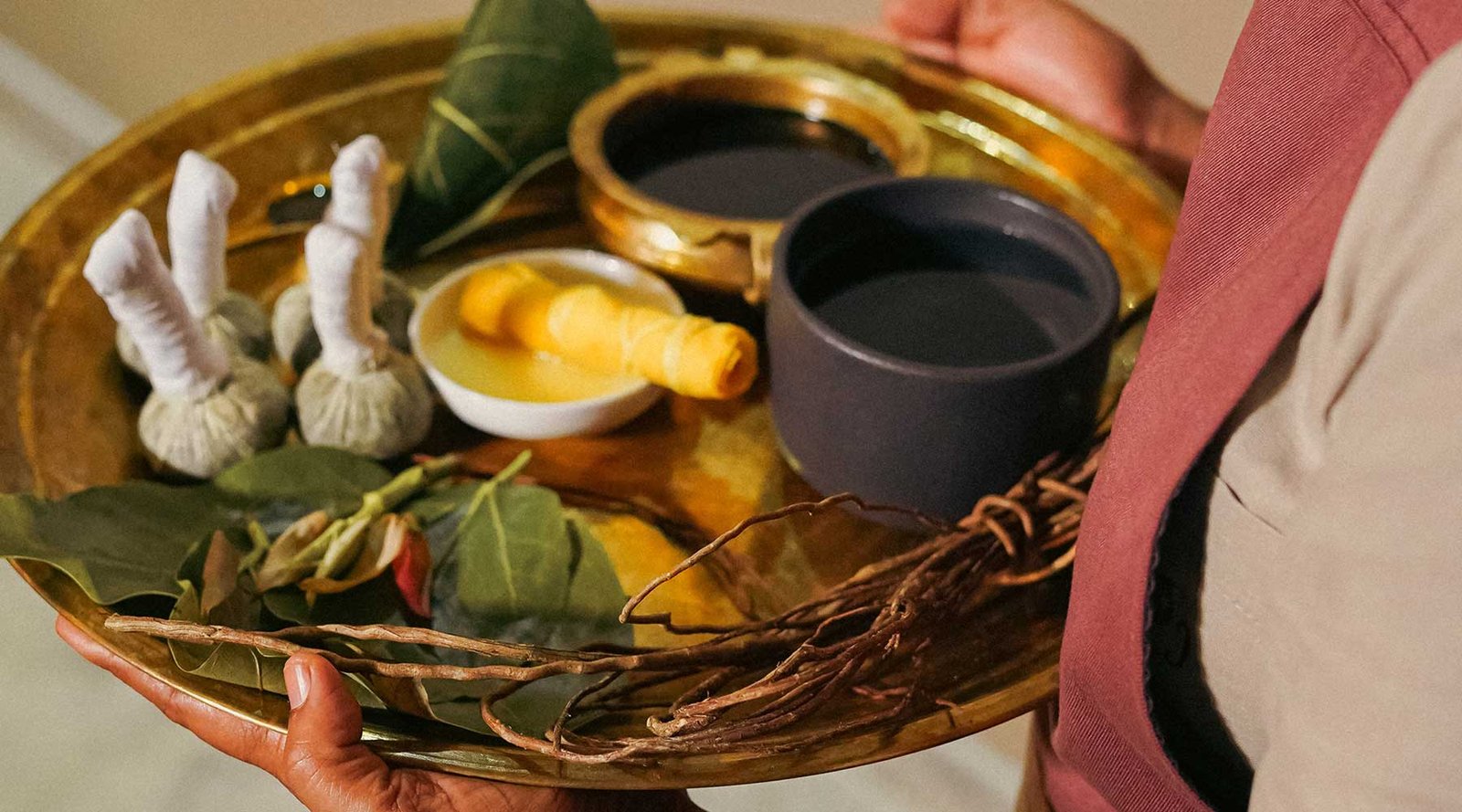Are your knees singing the blues? That familiar ache can be more than just a nuisance; it can impact your daily life, making simple activities feel like monumental tasks. While modern medicine offers various solutions, sometimes the answer lies in ancient wisdom, passed down through generations. As someone who has delved deep into the world of Ayurveda, I’m here to share insights into how this holistic science approaches knee pain, particularly through the remarkable power of Ayurvedic oil for knee pain.
Ayurveda, often called the “science of life,” is a 5,000-year-old system of natural healing that originated in India. It emphasizes a personalized approach to health, recognizing that each individual is unique and what works for one may not work for another. When it comes to joint discomfort, Ayurveda doesn’t just focus on the symptom; it seeks to address the root cause, aiming to restore balance within the body.
Understanding Knee Pain from an Ayurvedic Perspective
In Ayurveda, joint pain, including knee pain, is often associated with an imbalance of Vata dosha. Vata, composed of the elements of air and ether, governs movement in the body. When Vata becomes imbalanced, it can lead to dryness, cracking, stiffness, and pain in the joints. Think of a dry, squeaky hinge – that’s a good analogy for Vata-imbalanced joints. Other factors like accumulated toxins (ama), poor digestion, and even emotional stress can also contribute to this imbalance.
The beauty of Ayurveda lies in its comprehensive approach. It doesn’t just prescribe a quick fix; it offers a lifestyle. This includes dietary recommendations, herbal remedies, lifestyle adjustments, and perhaps most importantly for aching knees, the therapeutic application of warm herbal oils.
The Magic of Abhyanga: Self-Massage with Ayurvedic Oils
One of the cornerstones of Ayurvedic treatment for joint pain is Abhyanga, the practice of self-massage with warm herbal oils. This isn’t just a luxurious spa treatment; it’s a powerful therapeutic tool that deeply nourishes the tissues, lubricates the joints, and helps to pacify aggravated Vata.
When a warm Ayurvedic oil for knee pain is massaged into the affected area, several beneficial actions occur:
- Deep Penetration: The oils, infused with potent herbs, penetrate deep into the tissues, reaching the bones and joints.
- Lubrication: They help to replenish the natural lubrication in the joints, reducing friction and stiffness.
- Nourishment: The herbs in the oils carry vital nutrients to the joint tissues, promoting their health and resilience.
- Vata Pacification: The warmth and unctuousness of the oil directly counteract the dry and cold qualities of Vata, bringing it back into balance.
- Detoxification: Regular massage can help to dislodge accumulated toxins (ama) from the tissues, allowing the body to eliminate them.
Exploring Key Ayurvedic Oils for Knee Pain
While there are many wonderful Ayurvedic oils, some stand out for their specific benefits in addressing knee pain. Here are a few that I often recommend and have seen remarkable results with:
1. Mahanarayan Oil: The King of Joint Oils
Mahanarayan oil is perhaps the most famous and widely used Ayurvedic oil for all kinds of joint and muscle pain. Its name literally translates to “great Narayan,” signifying its profound healing power. This complex oil is a synergistic blend of numerous herbs, each playing a crucial role in its efficacy.
- Key Ingredients: Common ingredients include Ashwagandha, Bala, Shatavari, Dashamoola, and various warming spices like ginger and turmeric.
- Benefits: It’s renowned for its ability to strengthen muscles and bones, reduce inflammation, improve flexibility, and soothe nerve pain. Its warming properties are particularly beneficial for Vata-related pain. Regular application of Mahanarayan oil can significantly improve the mobility and comfort of aching knees.
2. Ksheerabala Oil: For Deep Nourishment and Cooling
Ksheerabala oil is another excellent choice, particularly when there’s a need for deep nourishment and a gentle cooling effect. While Vata pain is often associated with dryness and cold, sometimes there can be an underlying inflammatory component that benefits from a more soothing approach. “Ksheera” means milk, and “Bala” is a potent herb, reflecting the primary ingredients.
- Key Ingredients: Bala (Sida cordifolia) and cow’s milk are the primary components, often along with sesame oil as the base.
- Benefits: Ksheerabala oil is highly regarded for its nervine tonic properties, making it excellent for soothing irritated nerves around the knee. It promotes strength and stability, reduces burning sensations, and provides deep hydration to the joint tissues. It’s particularly useful for those experiencing weakness or a feeling of “emptiness” in their knees.
3. Dhanwantharam Oil: For Strength and Rejuvenation
Named after Dhanwanthari, the Hindu god of medicine and the physician of the gods, Dhanwantharam oil is a potent blend designed for overall rejuvenation and strengthening, especially beneficial for musculoskeletal issues.
- Key Ingredients: A rich mix of herbs including Bala, Dashamoola, Manjistha, and various other powerful botanicals, often prepared in a sesame oil base.
- Benefits: This oil is excellent for strengthening the ligaments and tendons around the knee, improving circulation, and reducing stiffness. It’s often recommended for conditions that involve wear and tear, or for promoting recovery after injury. Its rich, nourishing qualities make it a superb Ayurvedic oil for knee pain that benefits from deep tissue support.
4. Sahacharadi Oil: Targeting Specific Nerve and Muscle Pain
Sahacharadi oil is often recommended when knee pain is accompanied by nerve involvement or muscle spasms. It’s particularly effective for pain radiating down the leg or a feeling of tightness around the knee.
- Key Ingredients: Sahachara (Barleria prionitis) is the primary herb, along with other ingredients like Dashamoola and various warming and anti-inflammatory herbs.
- Benefits: This oil is known for its ability to reduce muscle spasms, alleviate nerve pain, and improve circulation. It helps to relax the muscles around the knee, thereby reducing pressure and discomfort.
How to Use Ayurvedic Oils for Aching Knees
The application of these oils is simple yet profound. Here’s a basic guide:
- Warm the Oil: Gently warm a small amount of your chosen Ayurvedic oil for knee pain. You can do this by placing the oil bottle in a bowl of warm water or by pouring a small amount into a metal spoon and warming it over a low flame (be careful not to overheat it). The oil should be comfortably warm, not hot.
- Apply Generously: Pour a generous amount of warm oil into your palm.
- Massage with Intention: Begin by gently applying the oil all around your knee. Then, using circular motions, massage the oil into the knee joint, paying attention to the areas of most discomfort. Use gentle yet firm pressure.
- Start with broad strokes over the thigh and calf, moving towards the knee.
- Focus on circular movements directly on the kneecap and around it.
- Use your thumbs to gently work into the soft tissues surrounding the joint.
- Massage for at least 10-15 minutes, allowing the oil to penetrate.
- Allow Absorption: After massaging, allow the oil to sit on your skin for at least 30 minutes, or even an hour, to allow for maximum absorption of the herbal properties. You can wrap your knee in a warm towel during this time for added comfort.
- Warm Bath/Shower: If possible, take a warm shower or bath after the oil has had time to absorb. This helps to further open the pores and allows the remaining oil to be absorbed or gently washed away. Avoid using harsh soaps on the massaged area immediately after.
For best results, aim to perform this self-massage daily, especially before bed, to allow the oils to work their magic overnight. Consistency is key in Ayurveda.
Beyond the Oils: A Holistic Approach
While Ayurvedic oils are incredibly powerful, remember that they are part of a larger holistic system. To truly support your knees and overall well-being, consider integrating other Ayurvedic principles:
- Diet: Focus on warm, nourishing, and easy-to-digest foods. Avoid cold, dry, and raw foods, which can aggravate Vata. Incorporate healthy fats like ghee.
- Hydration: Drink plenty of warm water throughout the day.
- Gentle Movement: Regular, gentle exercise like walking, swimming, or yoga can help maintain joint flexibility and strength. Avoid high-impact activities that put excessive strain on the knees.
- Stress Management: Chronic stress can exacerbate Vata imbalances. Incorporate practices like meditation, deep breathing, or spending time in nature to reduce stress.
- Rest: Adequate rest is crucial for tissue repair and rejuvenation.
Your Path to Comfort
Living with aching knees doesn’t have to be your norm. By embracing the ancient wisdom of Ayurveda, particularly through the consistent use of a well-chosen Ayurvedic oil for knee pain, you can embark on a journey towards greater comfort, flexibility, and overall well-being. It’s a gentle yet profound approach that honors your body’s innate ability to heal.
As you explore these time-tested remedies, listen to your body, be patient with the process, and remember that true healing is a journey, not a destination. Embrace the wisdom of Ayurveda, and rediscover the joy of comfortable, mobile knees.
YOU MAY ALSO LIKE: Thе Futurе of Cooking Bеgins with Stainlеss Stееl Induction Cooktops











